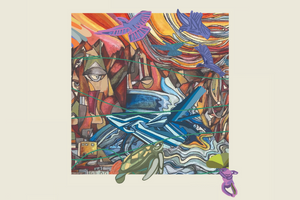
The Earth Turns
The Earth Turns a climate-inspired performance developed by The American University in Cairo in the lead-up to the COP27 Climate Conference.

Environmental damage returns to humans in the form of diseases and health conditions.
Numerous studies have linked the fallout of climate change to an increase in both infectious and chronic diseases, many of which are irreversible.
AUC’s Institute of Global Health and Human Ecology (IGHHE) is working to identify and understand more of these links, which may help us anticipate, mitigate or adapt to these challenges.
“Climate change is a complex issue that goes beyond weather patterns, melting of polar ice caps and rising sea levels,” said Hassan El-Fawal, professor of biomedical sciences and IGHHE founding director.
To read the full article, click here.
